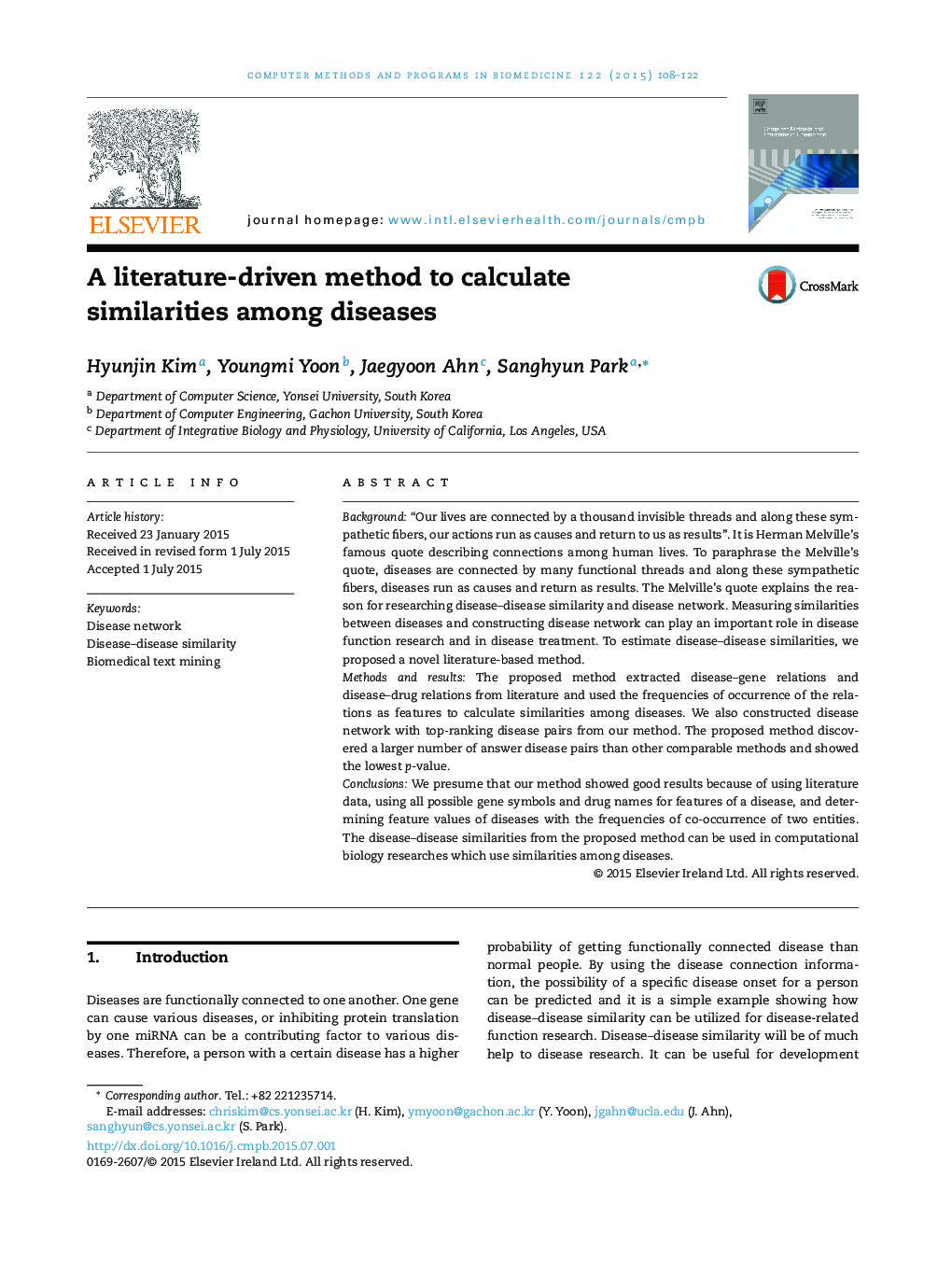| Article ID | Journal | Published Year | Pages | File Type |
|---|---|---|---|---|
| 468685 | Computer Methods and Programs in Biomedicine | 2015 | 15 Pages |
•We proposed a novel method which calculates disease–disease similarity.•The proposed method can be used in constructing of disease network.•The proposed method discovered the largest number of answer disease pairs and showed lowest p-value when compared with other comparable methods.•The proposed method can provide an insight of relationship between diseases.
Background“Our lives are connected by a thousand invisible threads and along these sympathetic fibers, our actions run as causes and return to us as results”. It is Herman Melville's famous quote describing connections among human lives. To paraphrase the Melville's quote, diseases are connected by many functional threads and along these sympathetic fibers, diseases run as causes and return as results. The Melville's quote explains the reason for researching disease–disease similarity and disease network. Measuring similarities between diseases and constructing disease network can play an important role in disease function research and in disease treatment. To estimate disease–disease similarities, we proposed a novel literature-based method.Methods and resultsThe proposed method extracted disease–gene relations and disease–drug relations from literature and used the frequencies of occurrence of the relations as features to calculate similarities among diseases. We also constructed disease network with top-ranking disease pairs from our method. The proposed method discovered a larger number of answer disease pairs than other comparable methods and showed the lowest p-value.ConclusionsWe presume that our method showed good results because of using literature data, using all possible gene symbols and drug names for features of a disease, and determining feature values of diseases with the frequencies of co-occurrence of two entities. The disease–disease similarities from the proposed method can be used in computational biology researches which use similarities among diseases.
